There are many definitions for Machine Learning, nevertheless, the one from the Western Governors University (WGU) is direct and to the point. It states that “Machine Learning (ML) is the process of a computer program or system being able to learn and get smarter over time. At the very basic level, machine learning uses algorithms to find patterns and then applies the patterns moving forward. Machine learning is the process of a computer modeling human intelligence, and autonomously improving over time. Machines are able to make predictions about the future based on what they have observed and learned in the past. These machines don’t have to be explicitly programmed in order to learn and improve; they are able to apply what they have learned to get smarter”.
Now imagine if ML can help project executives to have a real-time single version of the truth dashboard that details all communications, tasks, and events that have the highest urgency to be responded to and the priority for responding to them either by taking a decision or being part of the decision to be taken, while also providing details of key performance trends for key business processes. Although such dashboards are already in use by many project executives, nevertheless, the content of most of those dashboards tends to depend largely on information shared by project team members who have their own knowledge in defining the urgency and priority of communications, tasks, and events. This means that project executives will always encounter the risk exposure associated with the extent and quality of the project team members knowledge, risk tolerance, bias, and subjective opinions as well as the risk exposure of having disconnected data silos, communication barriers, information distortion, delays in sharing information and others. The exposure of those risks will exponentially increase if those executives were responsible to manage a program or a portfolio of projects.
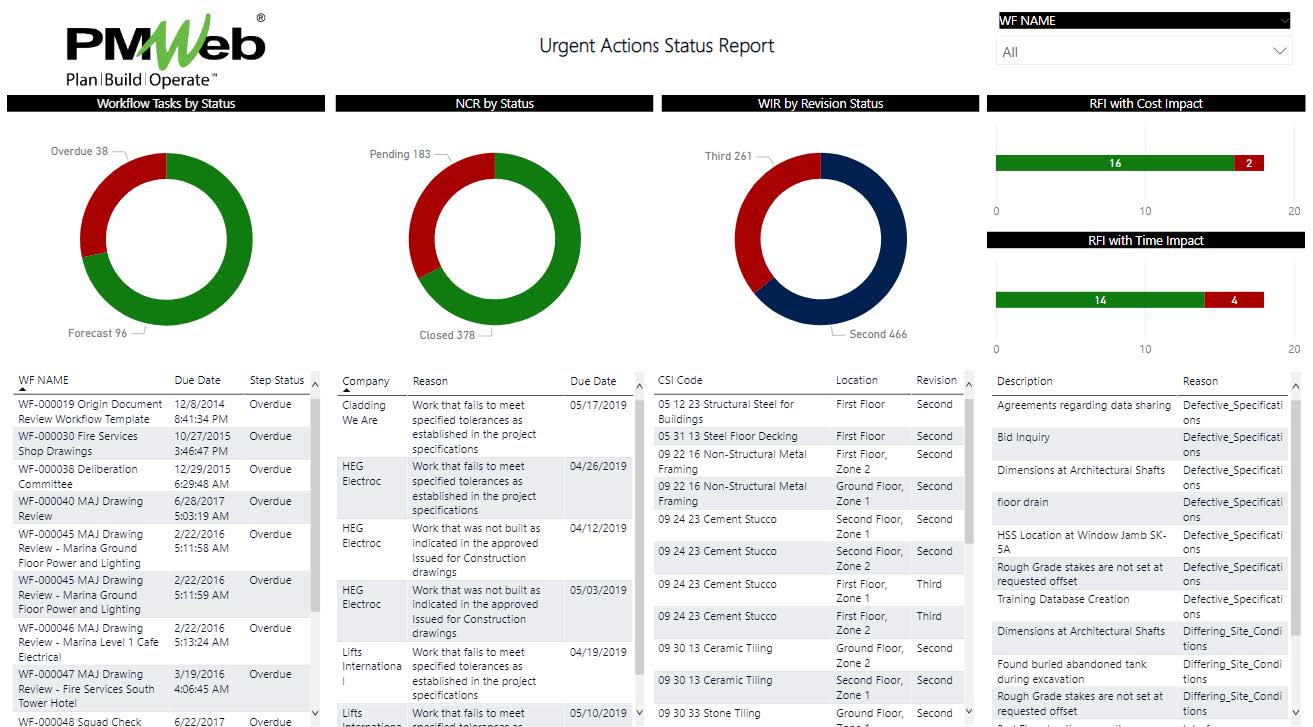
For machine learning to be of relevance to any industry, including the capital construction industry, it needs to learn from what matters most to the industry it is being used at as well as the quality and volume of data that relates to the business processes need to be managed in each industry. In other words, machine learning will be of no value if it does not have access to data for which it can use to keep improving as more relevant data becomes available.
Therefore, for project executives to have this machine-learning-enabled actions dashboard, there are few minimum requirements for the data to be provided for the ML platform. The first of those is that all data and documents associated with project management business processes across the organization’s complete projects’ portfolio must be captured and stored on a single data repository. Data silos that are stored at different locations by different individuals should never be permitted. The second requirement is that the templates used to capture the projects’ data and documents should be standardized to ensure data consistency, relevancy, accuracy, and quality. The third requirement is that there should be a well-defined workflow for reporting projects’ data associated with each business process to ensure accountability for the provided data.
In addition, there is a requirement to provide the data fields that will enable the ML platform to learn the rules to be used to define the urgency and priority of actions needed to respond to the project’s communications, tasks, and events. For capital construction projects, there are three interrelated data field types that are needed as a minimum to build those rules. The first of those is the Work Breakdown Structure (WBS) which is the basis for defining what is covered and maybe not covered by the project’s scope of work. The second data field is the Cost Breakdown Structure (CBS) which although might overlap with the WBS, nevertheless, it will be detailed to a level where the project’s budget, earned revenue, and the actual cost will be captured. The third data field is the project schedule activity which has more details than the WBS and CBS data fields. The project schedule activity is the data source that sets the priority for taking actions on urgent matters depending on the criticality of the impacted project schedule task also known as Total Float (TF) value.
The last must requirement is that the Machine Learning platform must be able to extract, transfer and load the projects’ data needed for the urgent actions’ dashboard. The data extraction should be in real-time to avoid the threats of data lag. The extraction, transferring, and loading of projects’ data should always ensure that the connectivity with the transactions that have generated this data is always protected and available should there be a need to trace the source of shared data.
To fulfill those requirements, a Project Management Information System (PMIS) platform like PMWeb needs to be used. Being a 100% web-enabled solution with no limit to the number of projects and programs that can be managed, PMWeb will ensure having a single data and document repository for the complete portfolio of projects and programs managed by the organization regardless of where those projects are physically located.
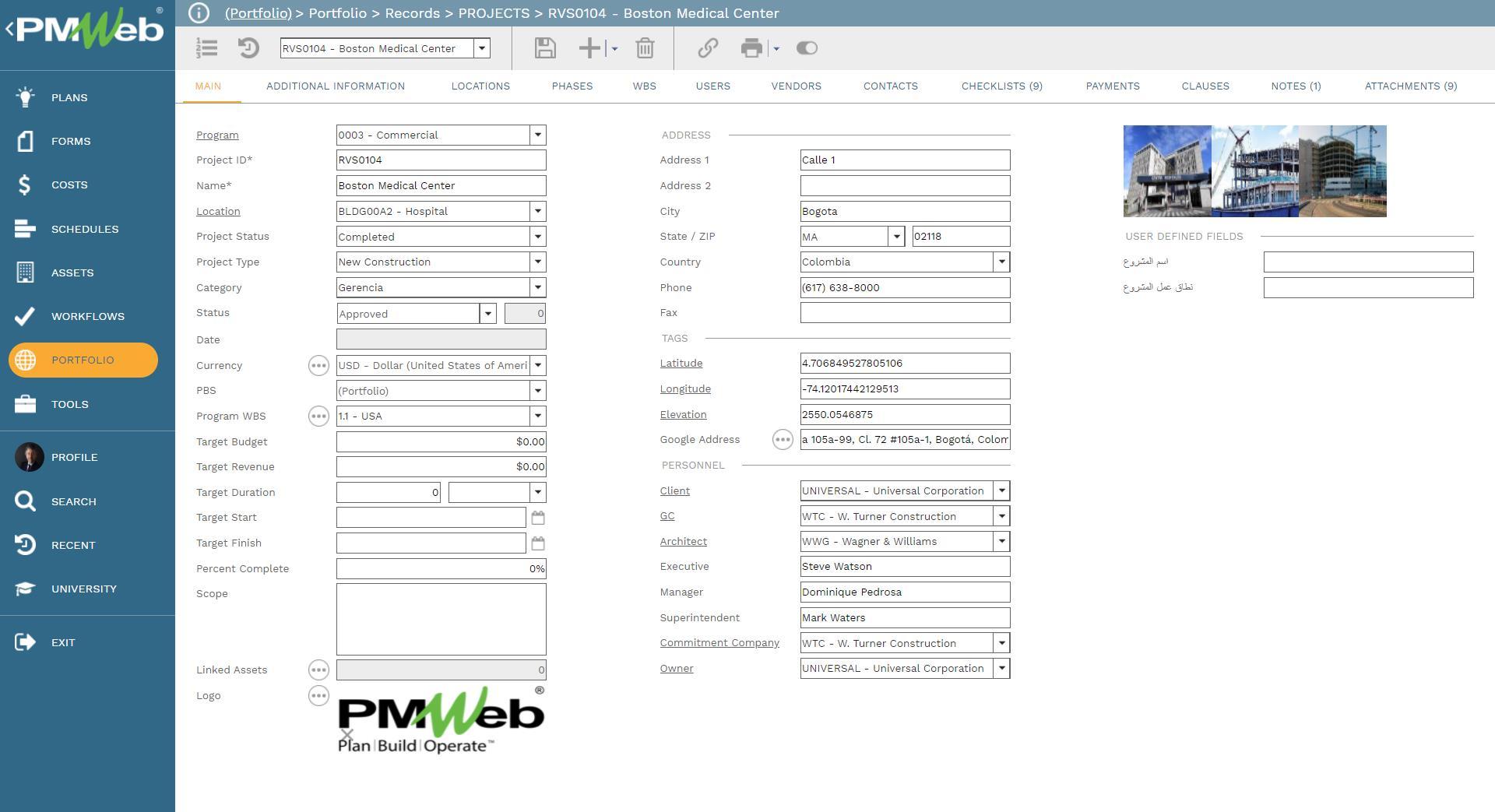
PMWeb default business processes’ templates that are common to most capital construction projects will ensure that all data needed for those processes are captured in a format that will ensure data consistency, relevancy, accuracy, and quality. PMWeb allows each entity to add as many additional data fields to those standard business processes’ templates to address the specific needs of each organization. Those additional data fields can be text, numeric, currency, date as well as values from predefined lists.
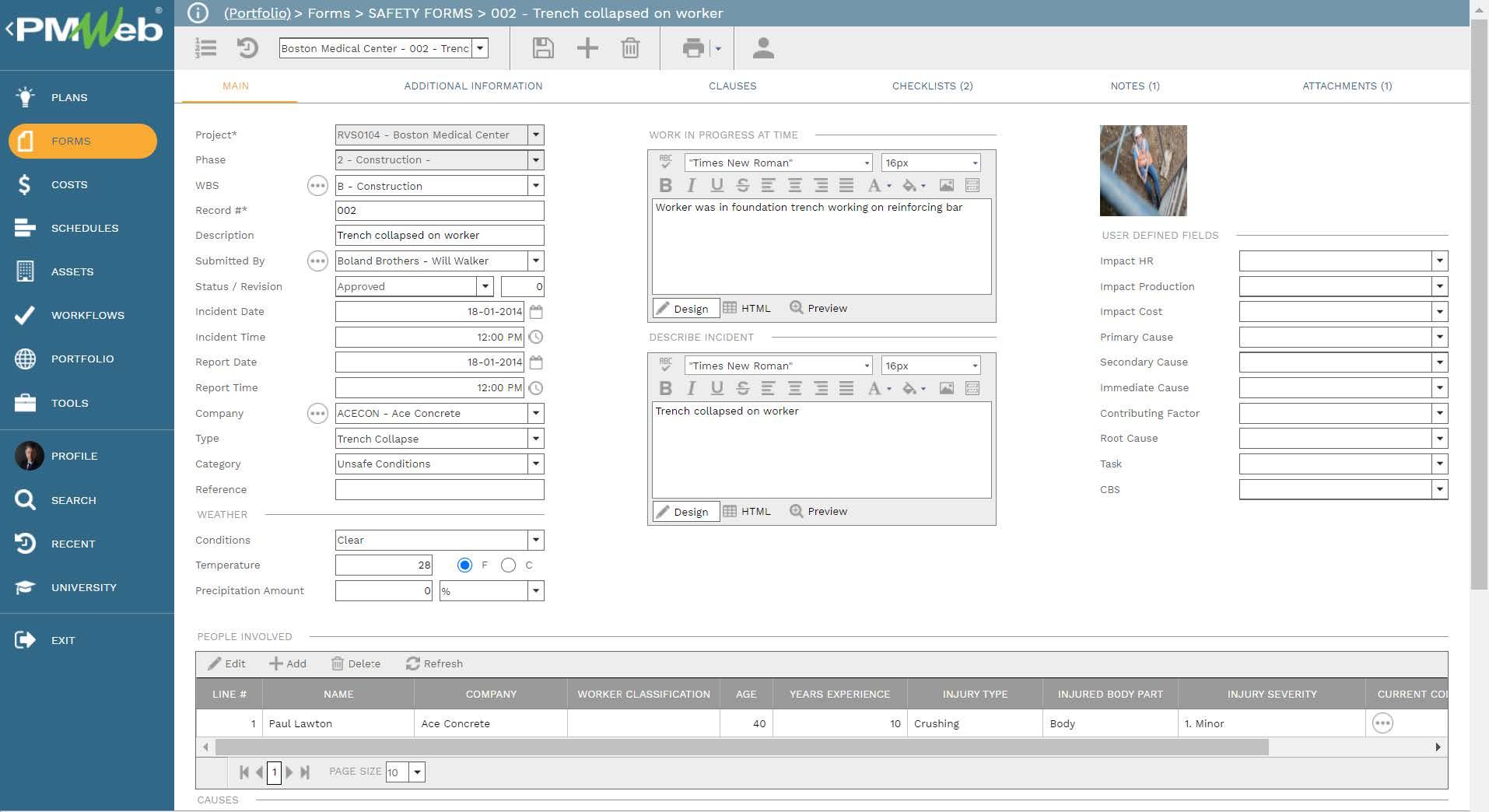
The same will apply to the many other business processes created using PMWeb custom form builder. Each input template will be designed to include the data fields and tables required to capture the required data for the relevant business process.
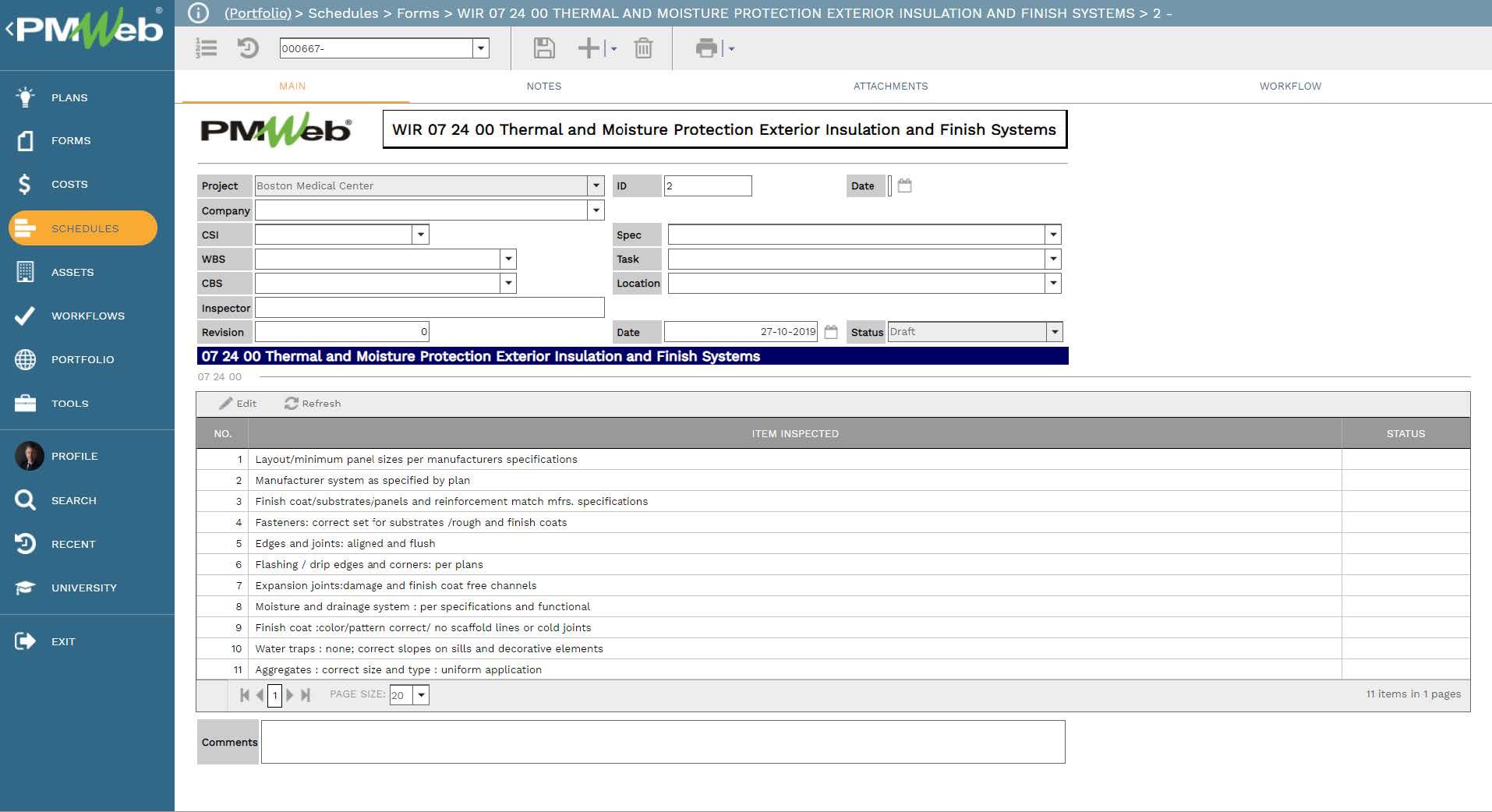
Since it is very common for capital construction projects that each business process transaction requires to be attached with the documents referred to in each transaction, PMWeb allows attaching all those supportive documents to the record. Those documents could be drawings, insurance documents, progress photos among others. It is also highly recommended to add comments to each attached document to provide a better understanding of what was the document for. The attachment tab also allows the user to link other records for business processes implemented in PMWeb as well as associate URL hyperlinks with websites or documents that are not stored in the PMWeb document management repository.
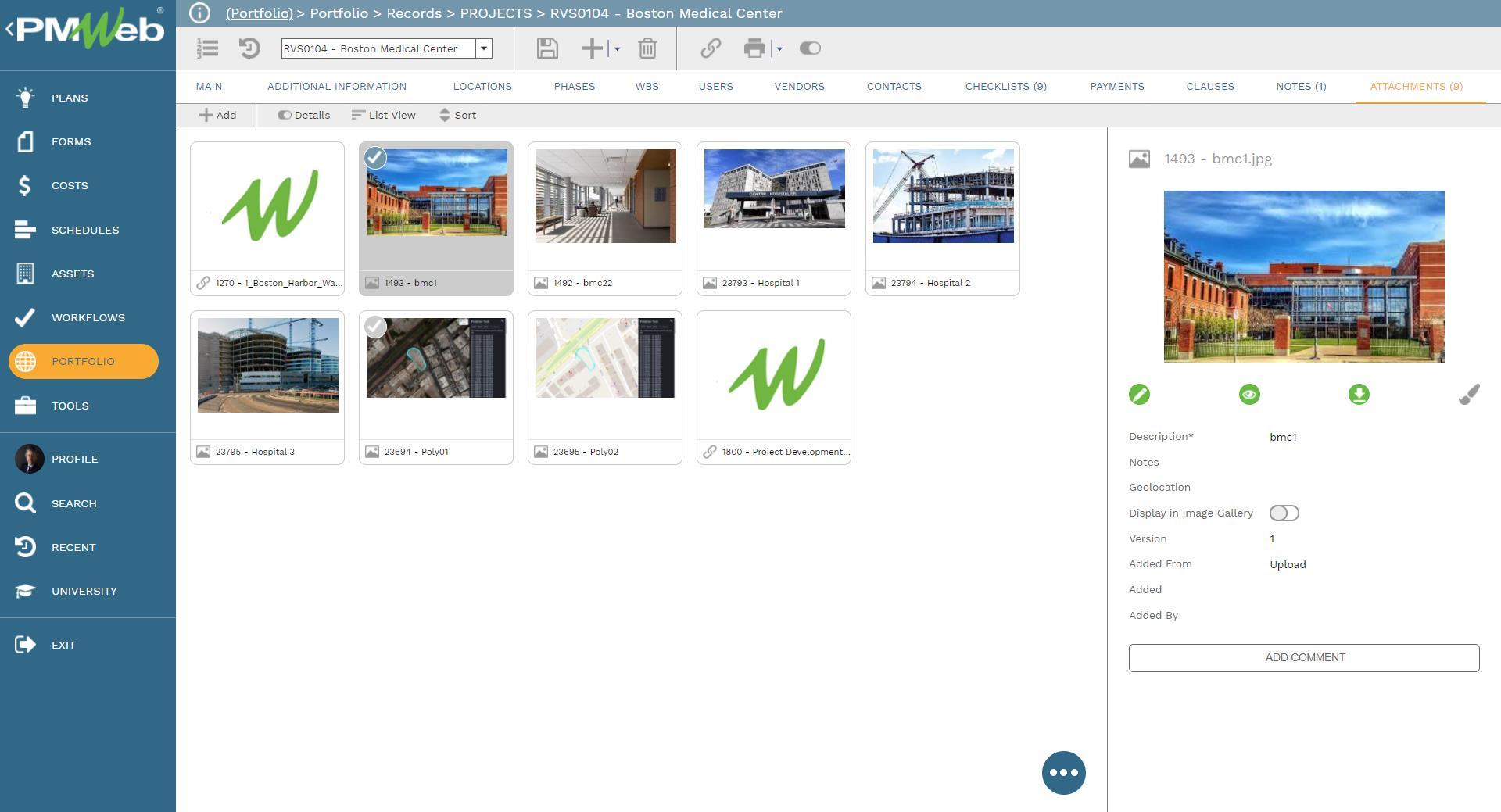
To enforce accountability for the data provided for transactions of each business process, the PMWeb workflow option will be used to add a workflow to formalize the review and approval tasks of those business processes. The workflow will map the sequence of the review and approval tasks along with the role or user assigned to the task, duration allotted for the tasks, rules for returning or resubmitting a document, and availability for each task. In addition, the workflow could be designed to include conditions to enforce the authority approval levels as defined in the Delegation of Authority (DoA) matrix that is part of each project management plan (PMP) also known as the project execution plan (PEP).
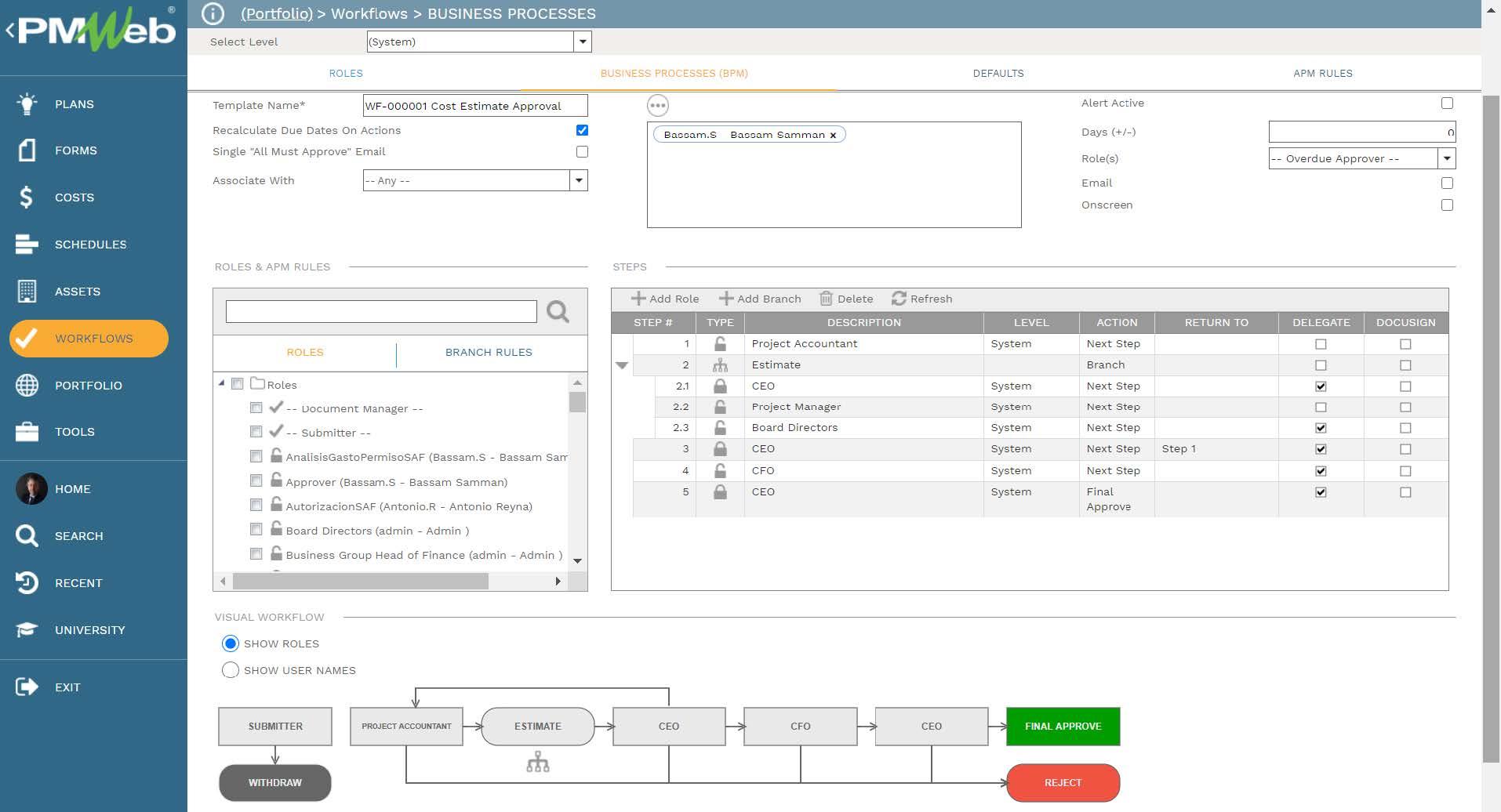
The workflow tab of each business process template will capture the planned review and approve workflow tasks for each transaction as well as the actual history of those review and approval tasks. PMWeb will capture the actual action data and time, done by who, action taken, comments made, and whether team input was requested.
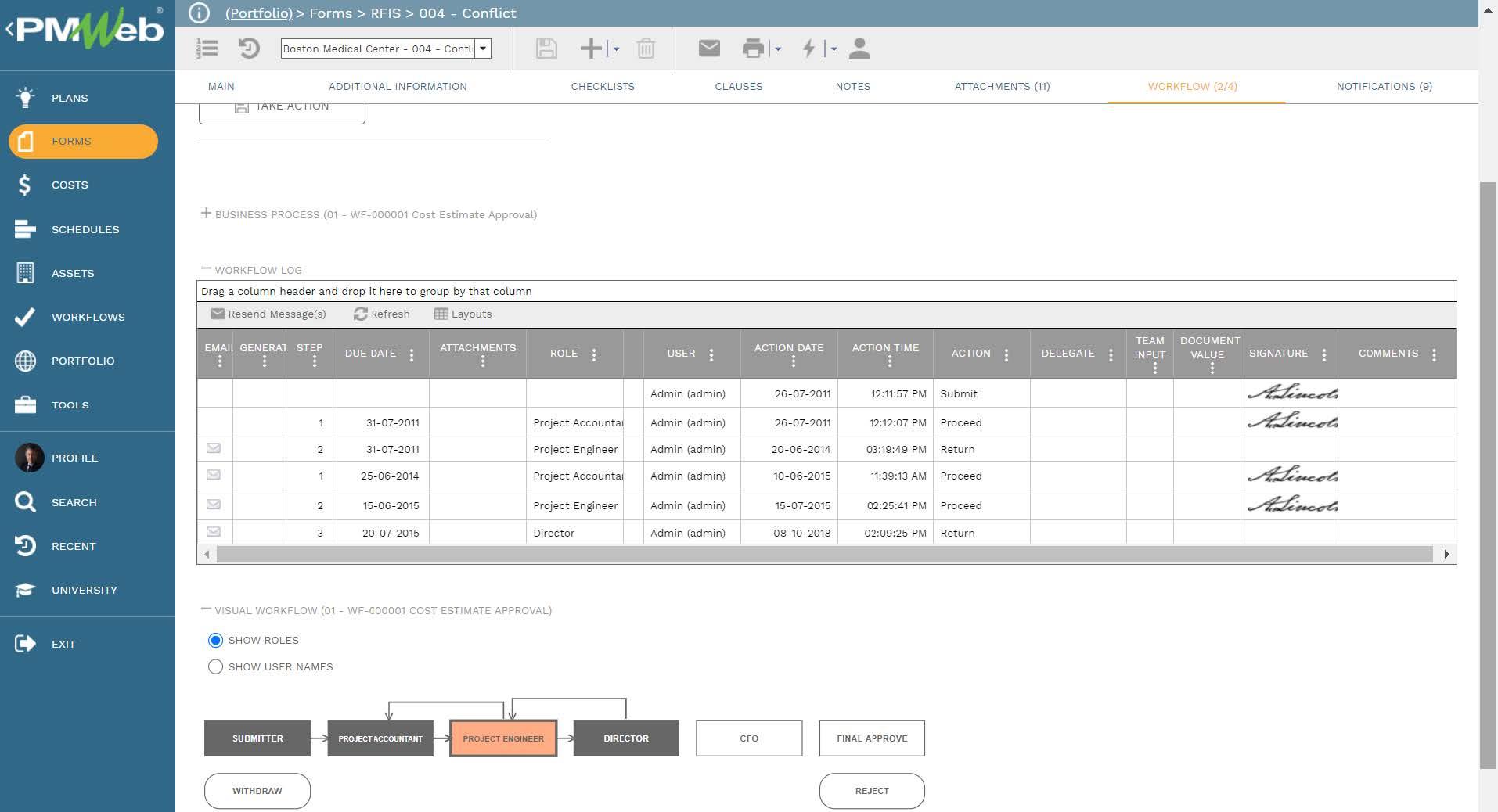
To ensure that all transactions of each business process are associated with their relevant Work Breakdown Structure (WBS) level and the project schedule activity that could be impacted if there was a delay in approving the transaction, PMWeb allows importing the current project schedule to its schedule database repository. This will immediately populate the database with the WBS Levels and the project schedule activities start and finish dates, original and remaining duration, percent complete, and total float value.
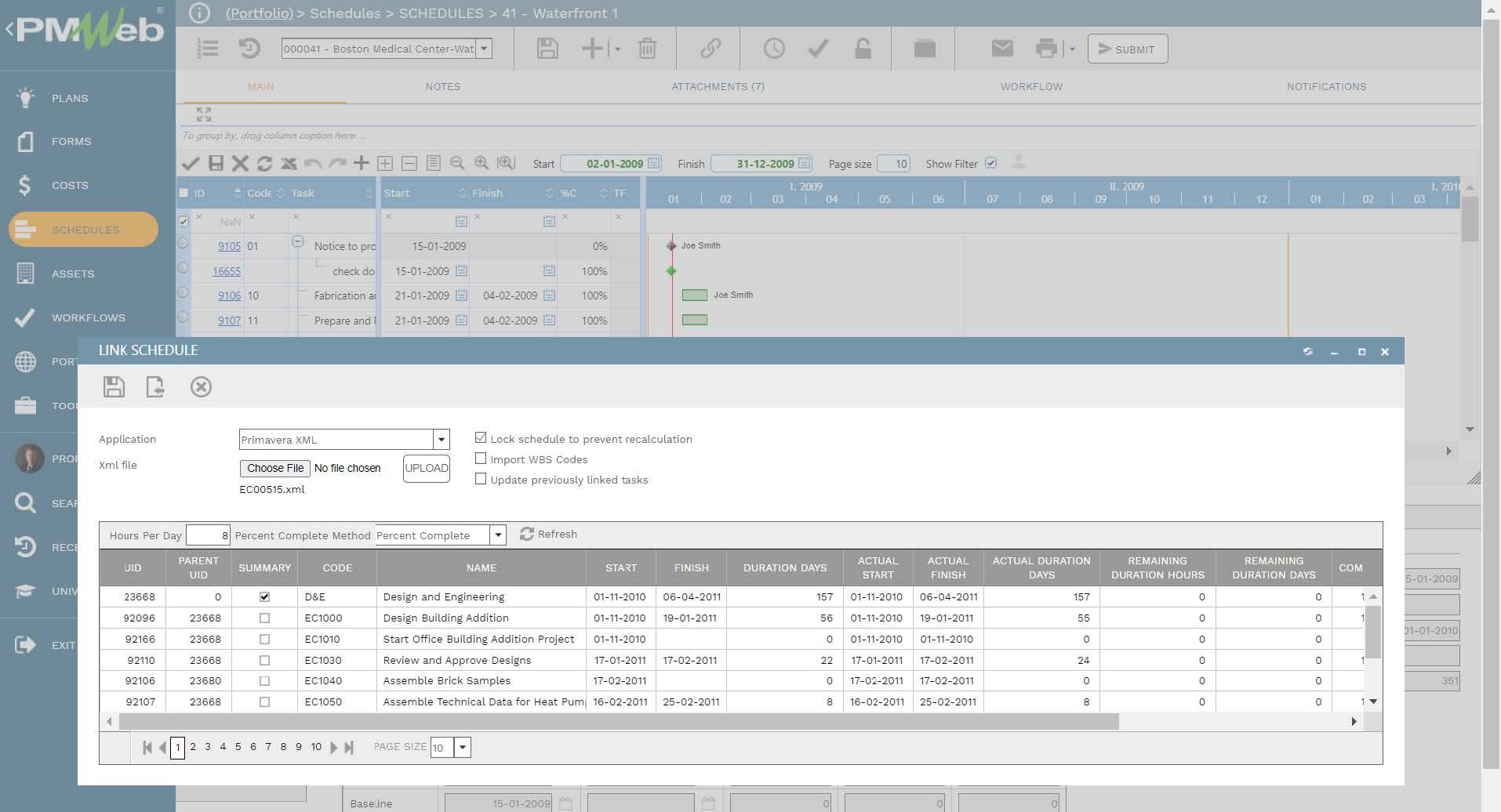
Having the project schedule data as part of the PMWeb database will enable including fields for WBS and Activity in each business process to be managed in PMWeb. For example, each business item in the meeting minutes module will be assigned with the WBS level and project schedule activity associated with the action needed for the business item which will be assigned to a project team member to act on. The same will also apply to Request for Information (RFI), Submittals, Daily Reports, Work Inspection Requests (WIR), Potential Change Orders, Change Orders, Interim Payment Certificates, Claim Notices, and all other business processes.
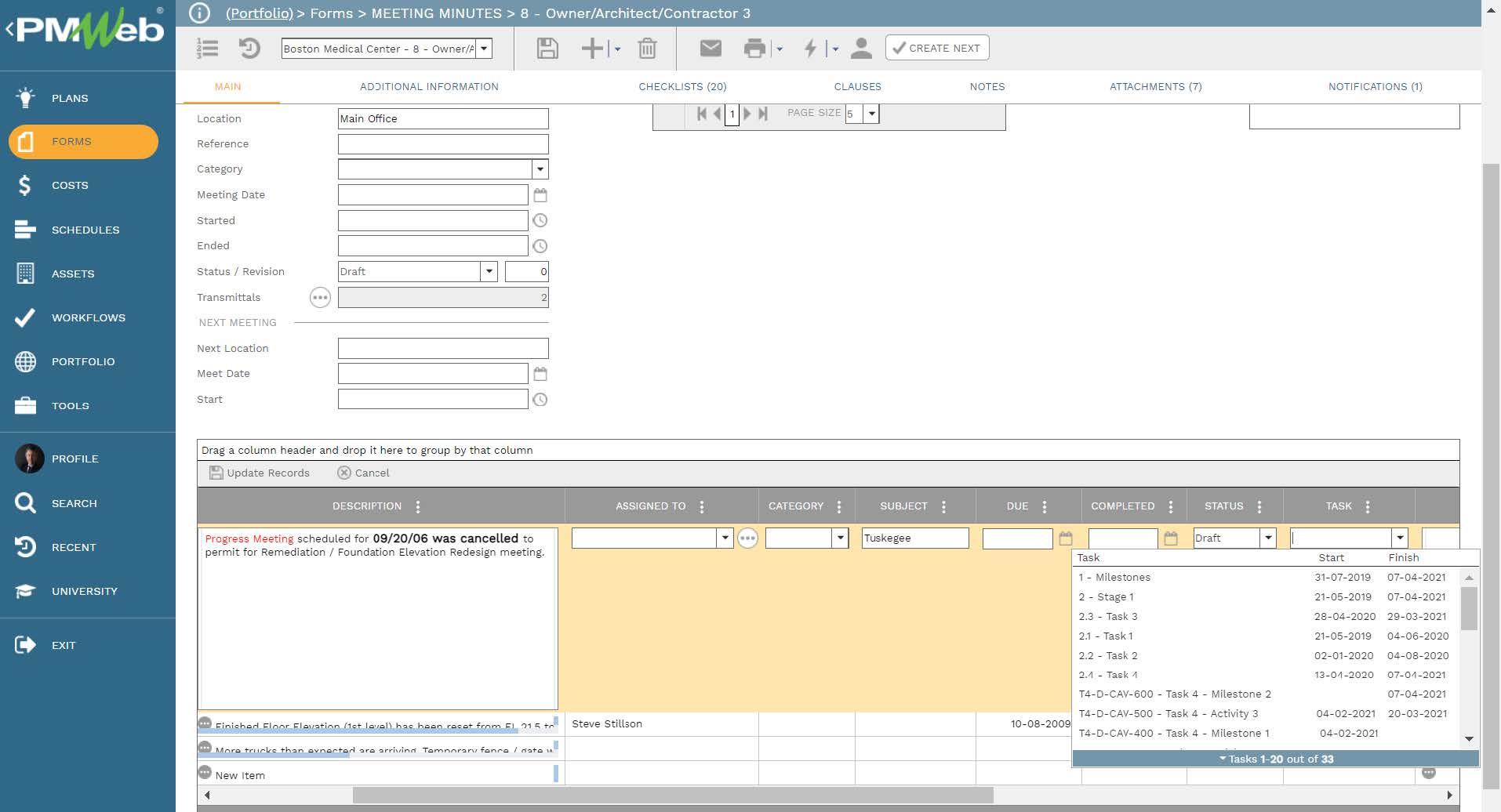
The Cost Breakdown Structure (CBS) levels that will be used for all financial-related details captured in the different business processes will be defined in the PMWeb cost account module. PMWeb allows defining up to 16 levels of cost breakdown structure levels if this was a requirement. The cost breakdown structure can be unique for each project or standardized across the complete projects’ portfolio that the organization has
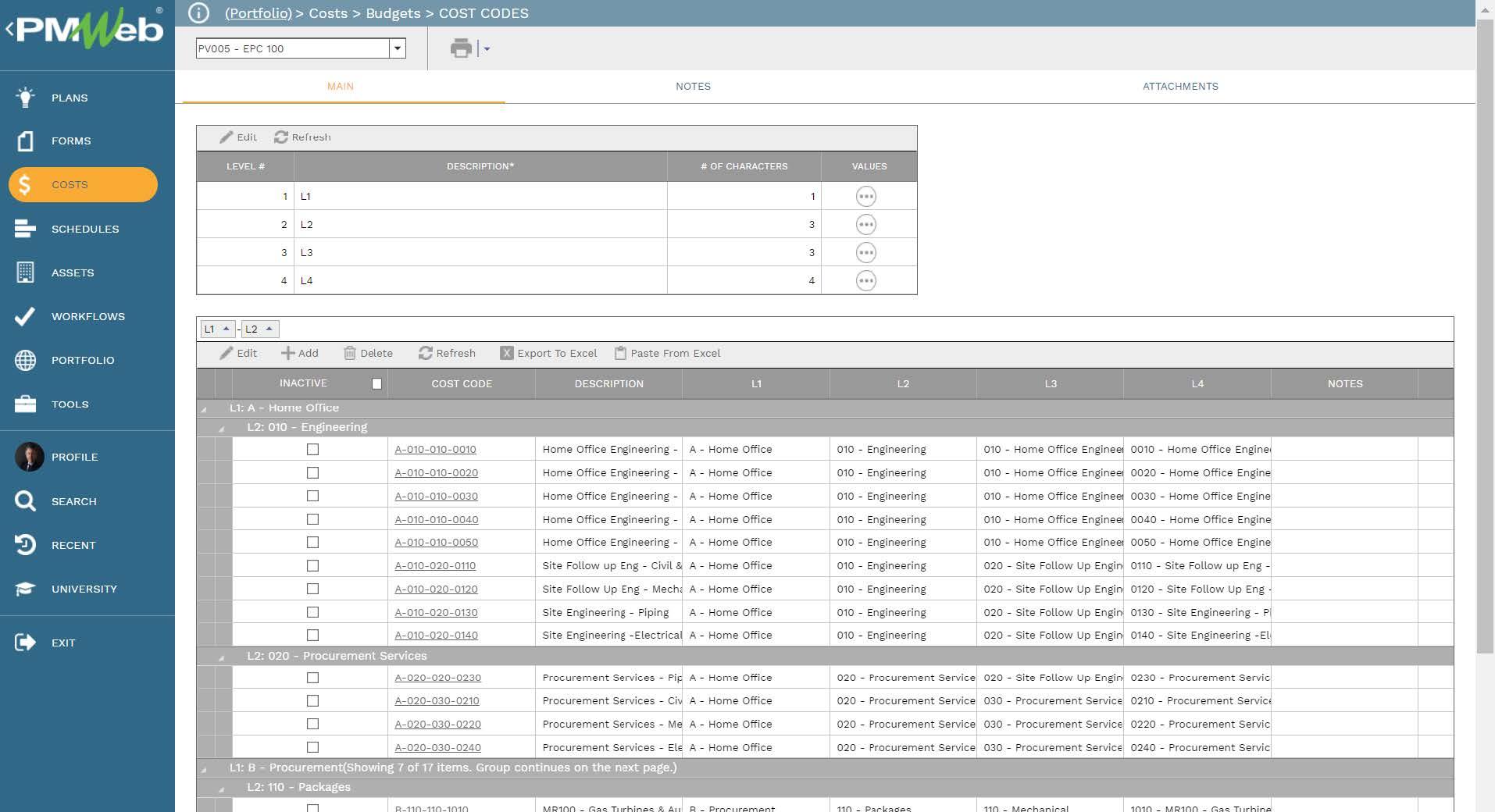
All PMWeb cost management business processes as well as other business processes like daily reports, timesheets, and others will have the cost breakdown structure (CBS) data field as one of the many data fields needed to manage the business process. The same will apply to other business processes that do not have the CBS data field by field for which the CBS data field will be added if this was a requirement.
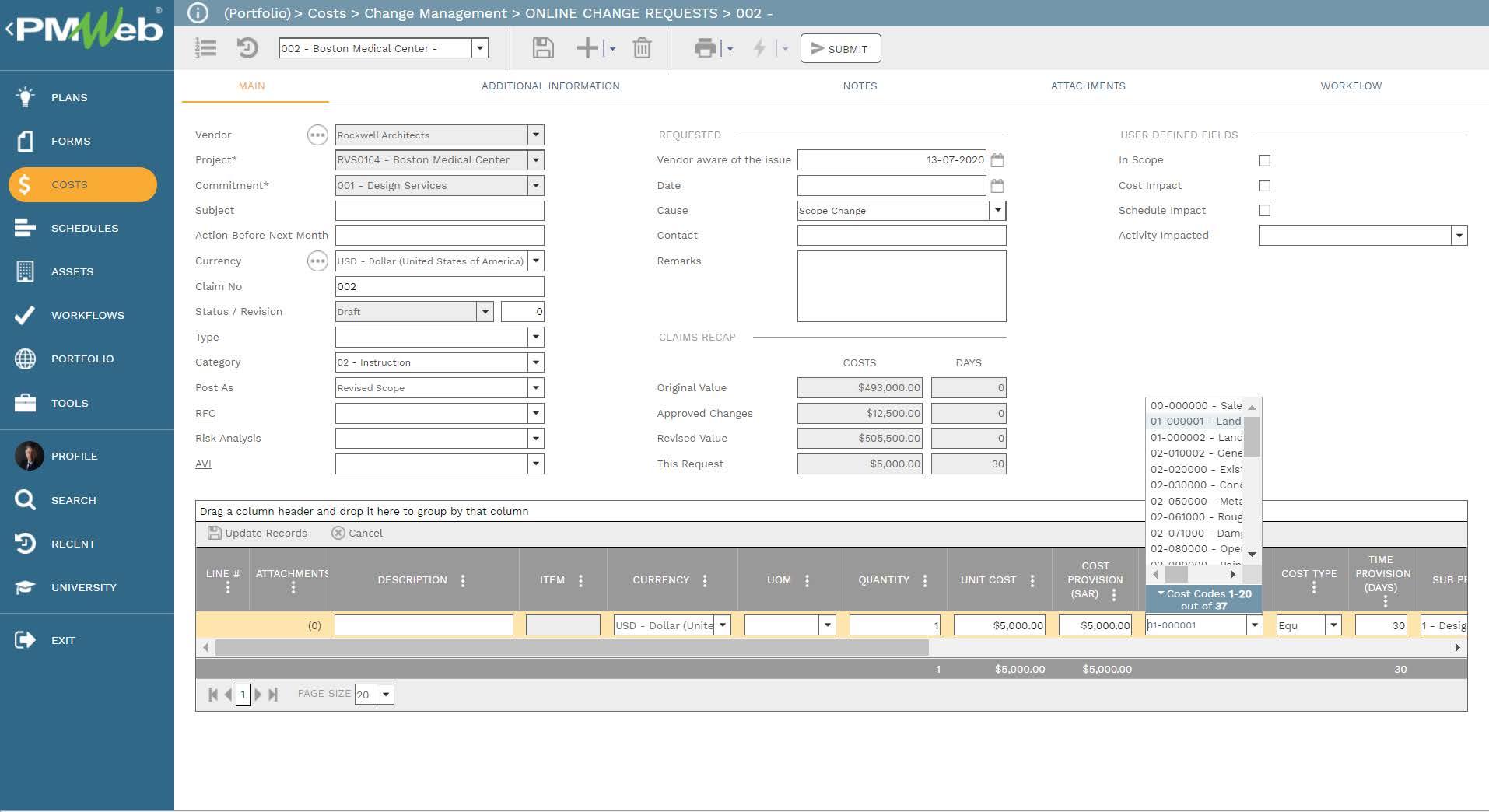
The PMWeb database will be automatically populated with the captured data from the different business processes managed on the project as soon as this data is provided by the authorized users. Whether PMWeb was configured as an On-Premise installation or as a SaaS with Dedicated Server, the PMWeb administrator can allow setting secured access to the PMWeb database. This will enable defining queries to extract the PMWeb database in the desired format. For example, the screen below details the cost database tables that were extracted from the PMWeb database into MS Power BI.

Since those PMWeb database tables would have common key data fields, applications like MS Power BI as well as machine learning applications will automatically detect and create links between those tables using the data fields that are common in those tables. Of course, the organization can also create other data table links when needed.




